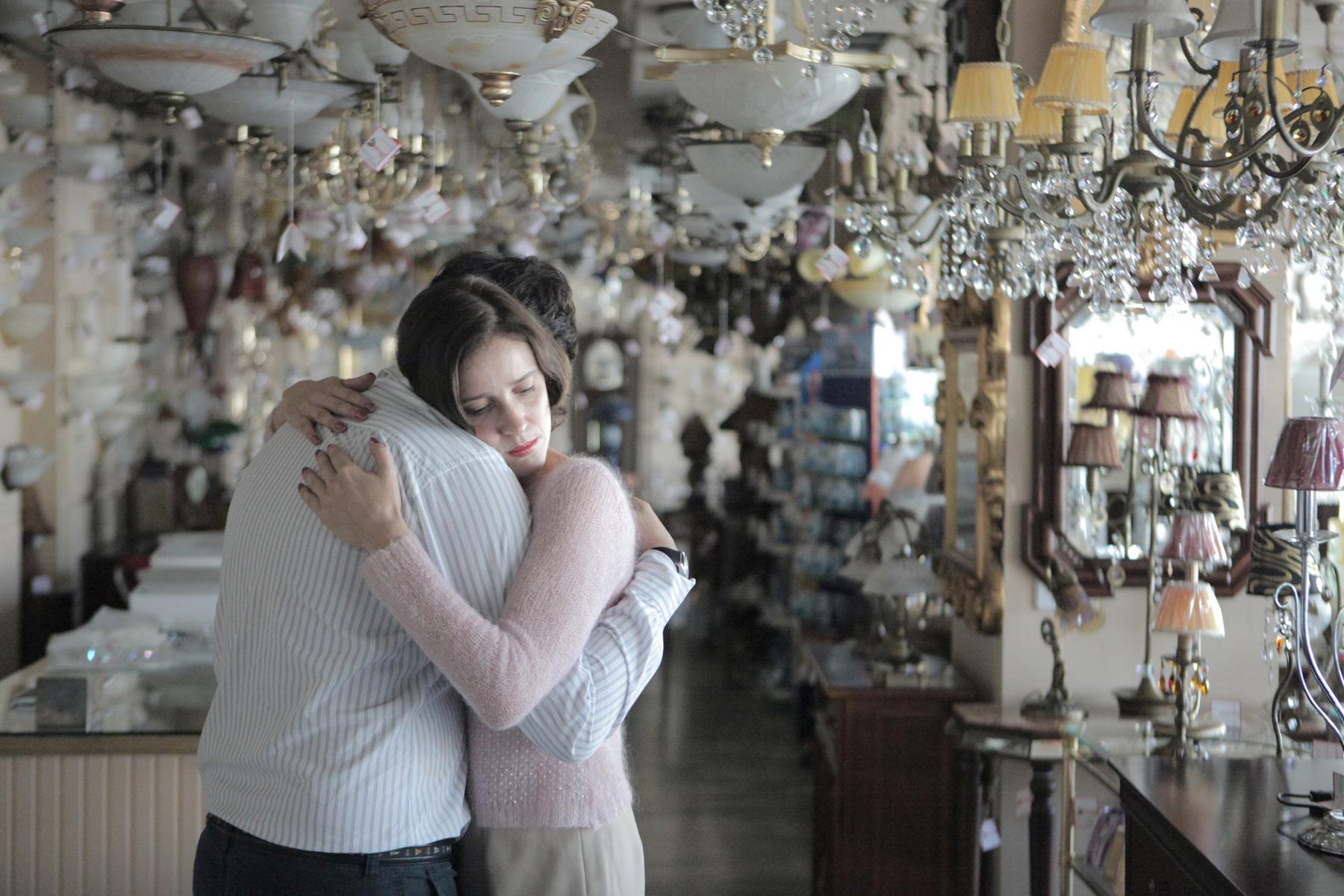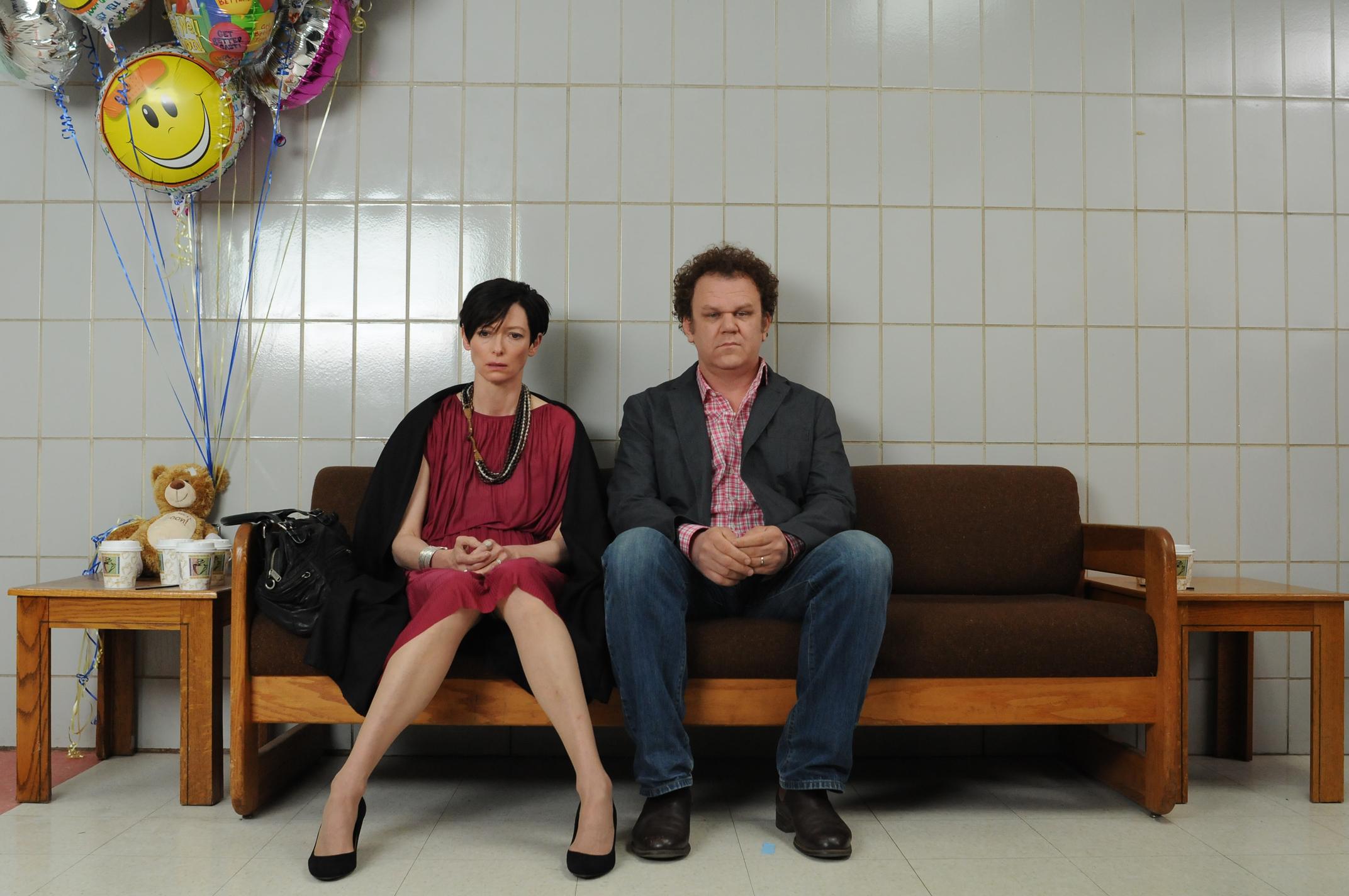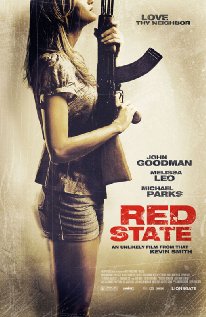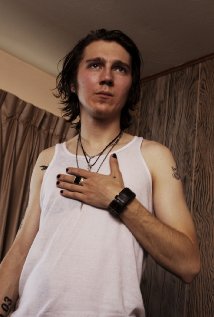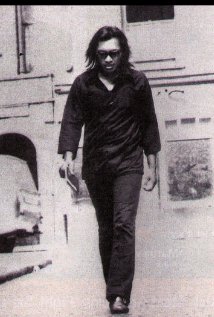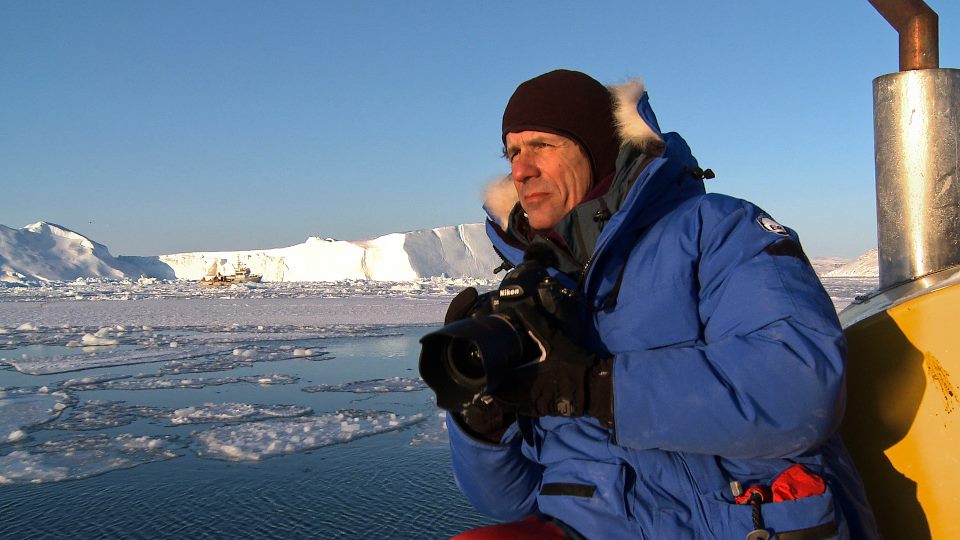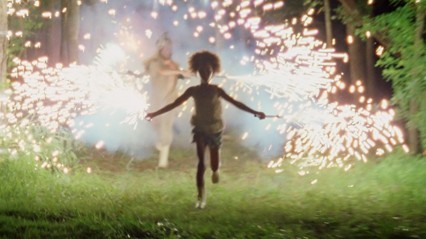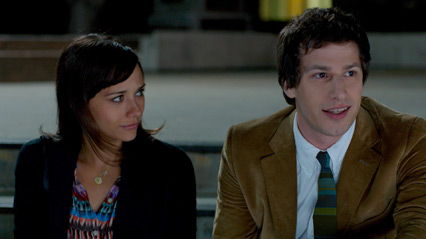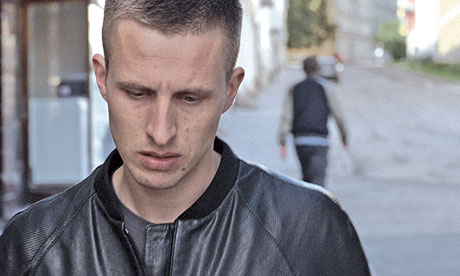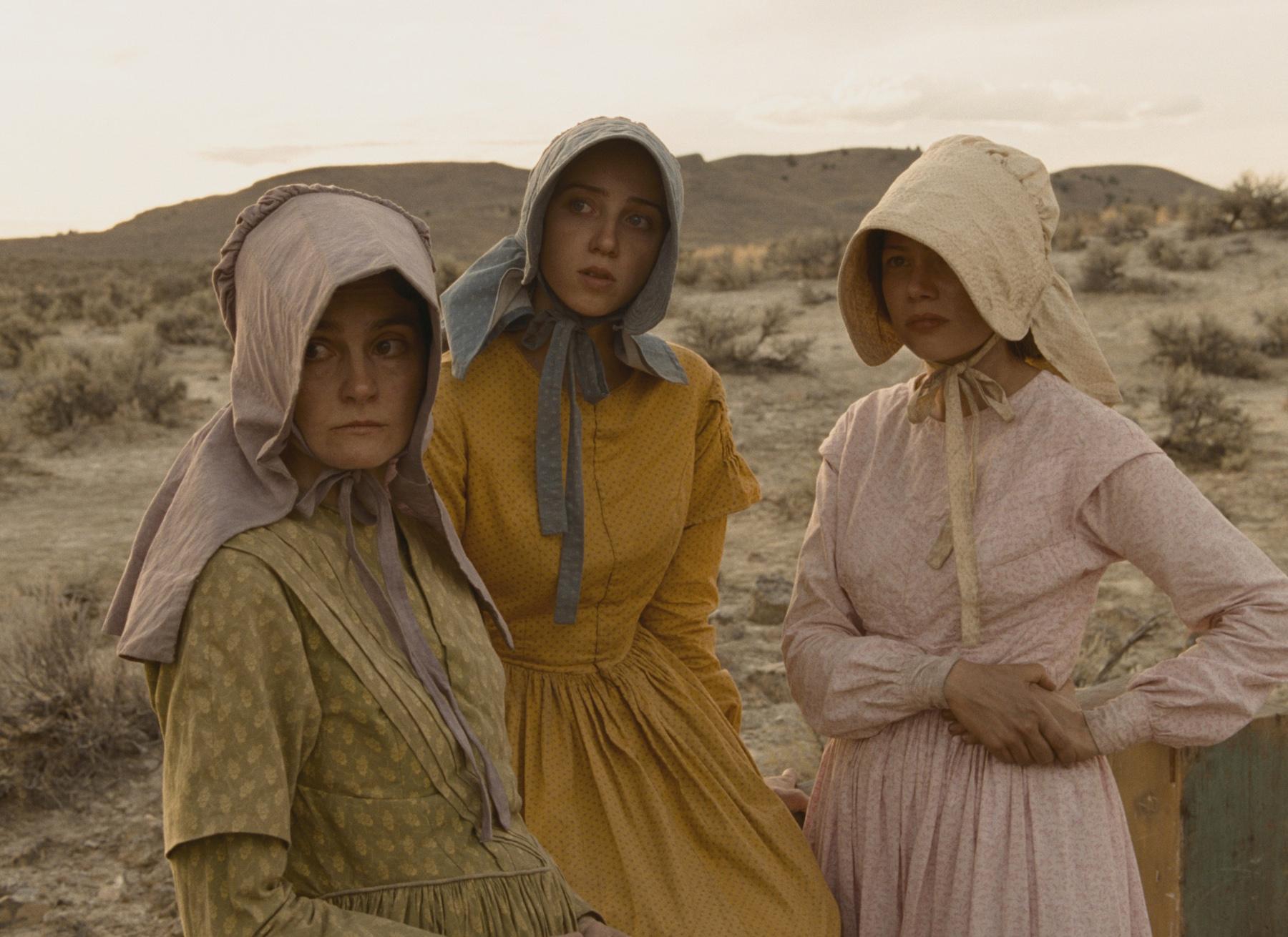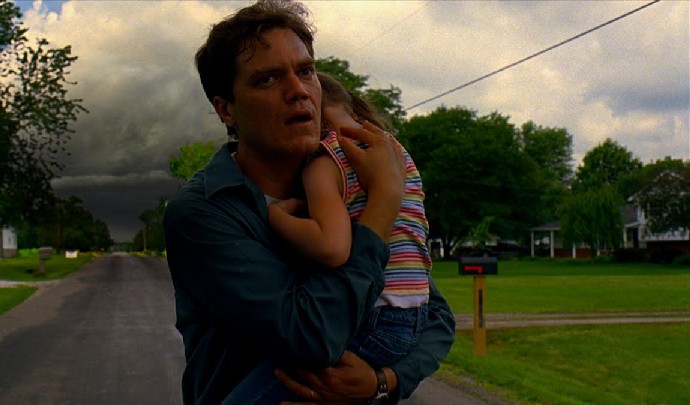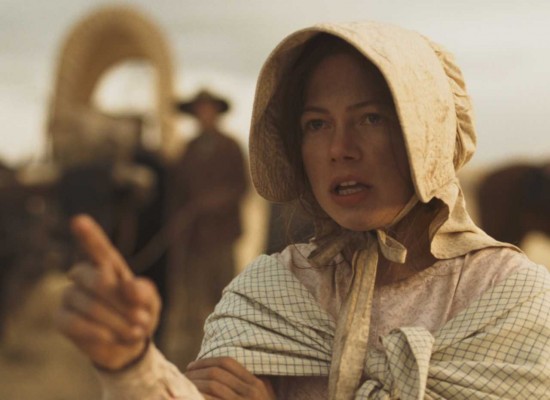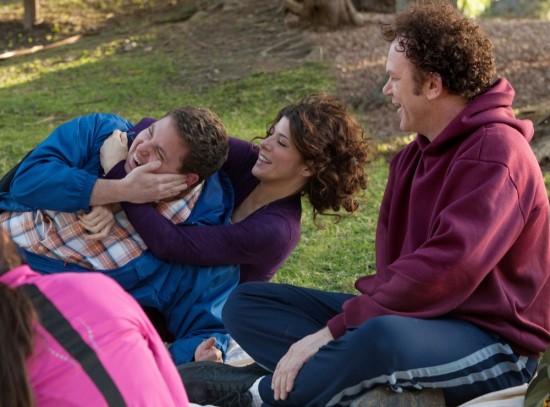As I sat in a hallway at the 2011 Toronto International Film Festival, waiting for director Lynne Ramsay to finish a photo shoot with We Need to Talk About Kevin star Tilda Swinton, I realized that Kirsten Dunst was stepping over me. I quickly stood up, apologetically, just in time to let a sunglasses-wearing Kiefer Sutherland pass by. They were both doing interviews for Lars Von Trier’s Melancholia.
But there was no time for stargazing: I was about to chat with one of cinema’s most important filmmakers, the creator of Ratcatcher (1999) and Morvern Callar (2002). As Swinton, Ramsay, and I headed down the hallway, passing paparazzi, I reached out for Ramsay’s coat and said, “Don’t lose me!” Ramsay grabbed my arm, pulled me into the crowd and said, “We’re sticking together.”
San Francisco Bay Guardian: There’s so many people that wanna talk to you!
Lynne Ramsay: You’re all working me!
Tilda Swinton: But remember, it’s a very, very good thing.
LR: It is, right?
TS: It is! It’s a very, very good thing! I remember last year — no, wait, two years ago — being taken over to some interview with some television guy and when we arrived, the people were like, “What film are you with?” We said, “It’s Italian: I Am Love.” And they said, “We don’t know anything about it! We’re not gonna write about that.” And we had to walk back across Toronto.
LR: Oh no!
TS: They had no interest in talking to us!
LR: (Shrieking) Really?
SFBG: So this is a good thing!
TS: This is a great thing!
(Swinton bids us farewell)
SFBG: So, as soon as your film ended last night, the Toronto folk sitting around me immediately began questioning Tilda’s character and her parenting skills. (Ramsay laughs hysterically.) They were all like, “I would never have let him — .” Or “He would have gotten a smack across the — .”
LR: (Laughing) Totally! Totally!
SFBG: And this immediately made me realize since I don’t have kids, how just the plot alone will provoke audiences to have extremely different perspectives towards your film. It really is a film that could be watched multiple times, which is exactly what I wanted to do as soon as it was over. The structure, the editing, the sound, it all made me want to be smarter.
LR: I’m not really that “smart” myself. (Laughs) I mean everyone who worked on the film is gorgeous, but the script was completely edited. We had no money; we had absolutely no time. I had to be so precise about the images. [Editor Joe] Bini is a musician and so is [my husband, Rory Kinnear], who was a co-writer on the film. So I think that helps as well. [Bini] also edited [Werner] Herzog’s new film Into the Abyss! He’s so sweet and such a great editor.
I’m also a big fan of music and I think we constructed a lot musically, added to that the soundtrack by Johnny [Greenwood, of Radiohead], and the amazing sound editor Paul Davies, who has done all my movies starting with my short films.
SFBG: Gasman (1998) and Ratcatcher (1999)?
LR: Yes, he did both. You know, I wanted to be a mixer in another life! It’s so much fun. Cinema is an atmosphere and …
SFBG: Well, your cinema is.
LR: [We Need to Talk About Kevin] was really constructed in the script. The sound design is even in there. It was pretty arduous trying to get — I mean it was 87 pages so there wasn’t a bit of fat on it. I was still asked to cut stuff because they were like “There’s no fucking way you’re gonna make this!” And in 30 days! Are you kiddin’? We didn’t believe it.
SFBG: 30 days?
LR: I don’t believe it myself, you know! Fuckin’ producers, bastards. We were gonna do it but we were broke as well, me and my husband and it had to all be prepared, it’s a high maintenance movie.
SFBG: Were you eating?
LR: (Laughs) Not really. We had smokes. But Seamus [McGarvey] was very generous with his time; he’s the DP [and an Oscar nominee, for 2007’s Atonement]. The gaffer, Jim McCullagh, had worked on The Godfather III and he really got behind us. The script supervisor Eva Cabrera had done a Malick film [The New World] and [production designer] Judy Becker had done Brokeback Mountain. They were all working for nothing because they loved the script.
SFBG: And maybe they loved you?
LR: (Laughs) Well, actually, they loved Seamus.
SFBG: Ratcatcher and Morvern Callar are such amazing films. I’m curious how Morvern was received in the UK, because it felt like at the time the film sort of went under radar in the states.
LR: It’s never been totally embraced. But I think it was a little bit ahead of its time because people seem to be finding it now. But at the time people were like “How dare you make this movie?”
SFBG: So let’s talk about the music. Johnny Greenwood’s score is so haunting but I’m curious about your choices of songs in both Kevin and Morvern.
LR: It was actually Rory who chose a lot of the tracks. This is a guy who I love, he’s an artist and he’d never done music in a film before. So we made mix tapes before we started and I love that because sound is such an integral part. Morvern is my little lush child and I love Samantha [Morton]. I want to work with both Tilda and Samantha again! They’re my kind of actors.
SFBG: You know, they are a very similar type of actor. In fact, [Kevin star] John C. Reilly falls into their category as well. They all know how to be the most interesting character on the screen in pretty much every movie they’re in. Yet you’ve taken them and put them in lead roles.
LR: I love the couple in Don’t Look Now (1973) because it’s Julie bloody Christie and Donald Sutherland, who isn’t the best looking guy but it all felt real, they weren’t this carbon copy couple. And in the book John C. Reilly’s character is more 2D, an all-American guy: “Golly gee, buddy.” And I thought that would make things way too flat if you cast a typically good-looking blonde guy.
SFBG: Tilda and John are so sweet together onscreen.
LR: They loved each other on set too, hanging out together. John came to my house and I would make him dinner! It was really cool shit! He bought me this beautiful guitar; it’s like a 1956 Gibson.
SFBG: Are you kidding?
LR: No! I know, right?
SFBG: Why?
LR: Well, we went to this guitar shop together and I was looking at this guitar and me and my husband were kinda too broke at the time but we were hoping that after the film was made, well maybe … if things went well … well, John just went and bought it. It was such a lovely gesture! He also recorded a song for my niece who came to the film set as my little assistant.
SFBG: I wanna hear that song.
LR: It’s so sweet. Her name is Shawn and he made the song called “Wee-Shawn,” and it’s so beautiful.
SFBG: Reilly, in my opinion, is one of the funniest men in Hollywood. How did you get him? Why would you think of him as the husband?
LR: Well, in fact, he contacted me! He had made a list of five directors he wanted to work with. He knew I was working on something and I was like, “I only have a minor part, and I’d love to give you a main part but this is a minor part,” and he was like “Dude, I’ll do it, yeah!” And he totally “got it.” You know?
SFBG: I do! I “got it” from him. His character is such a sweet ninny. Like a very sweet male who’s placed himself with a very commanding female.
LR: Totally, totally. A ninny who brings a certain kind of love, sort of an unconditional love because he doesn’t want you to see the bad side. And of course Ezra [Miller]’s Kevin responds quite well to him, but John brought so much depth to the character especially since it’s not the biggest part. He’s just amazing. Even Tilda brought her kids on set and John loved hanging out with them!
At Cannes, he hung out with my Mom and my sisters. He was in love with them. He’s a real part of the family now. Anytime I go to L.A. I just wanna hang out with John. We come from a very similar background you know, he’s a blue-collar guy and half-Irish.
SFBG: Kevin is so different from Ratcatcher and Morvern Callar yet you havn’t lost your voice. I am so excited for this film to hit the rest of the world.
LR: It was hard to make a movie in the U.S., an alien country for me. It was terrifying, in terms of the union and the money which doesn’t go the same way in America. Just getting a jackhammer seemed to be Kafka-esque! It was like, there’s a union who does do this and a union who does do that and I was laughing and going insane and I just wanted a meeting so I could say “get a fucking jackhammer! It’s an important scene and I need it!”
SFBG: So you were basically like Tilda’s character in the movie.
LR: Yes! But once we were up and running, the crew in New York was fantastic. They really get behind us.
SFBG: I love that there is no narration in this movie. In fact all of your films stress the image over dialogue. Does your brain look like these films?
LR: Are you calling me a weirdo? (Laughs) I’ve always thought very visually. When I was a kid, you could put me in the corner with some paper and some pencils and I’d be happy for the entire day. My mum thought it was great because my younger sister was super-clingy and I was the easy one. I didn’t even need TV. I’d just go into my own world. But again, even though my family was blue collar, there were lots of jazz drummers and saxophonists. Even my godfather was a painter.
SFBG: That’s this movie! This movie is jazz cinema!
LR: It’s crazy you’re saying that. We were just talking about that a couple of days ago!
SFBG: I said earlier I wanted to watch it again as soon as it ended, mainly because toward the end of the film, I swore I heard specific sounds that you had used in the beginning! Your films are so layered. They sincerely remind me of Orson Welles’ movies. They really are made for repeat viewings.
LR: I never went to school. So really, it’s just all street smarts. My mum was a cleaner and she’d go to work at six o’clock in the morning, she’d get us ready for school, I’d go out and then I’d come back when she was away, climb through the window, go back in and I’d be so much happier! I just wasn’t learning that much at school. There were too many people in the class, all these zombies, you know? People throwin’ things, half of the class was just destruction, you know? So what was the point?
(Ramsay pauses and smiles) You know, my dad was smart in my eyes. He just died; well, not totally recently but … and he loved crossword puzzles. And you know, that’s what I think it all is. You just need to put together the right puzzle pieces.
http://www.youtube.com/watch?v=bV7Y5cylhNc&feature=related
We Need to Talk About Kevin opens Fri/2 in Bay Area theaters.
Jesse Hawthorne Ficks teaches at the Academy of Art University as the Film History Coordinator and programs the film series Midnites for Maniacs.

